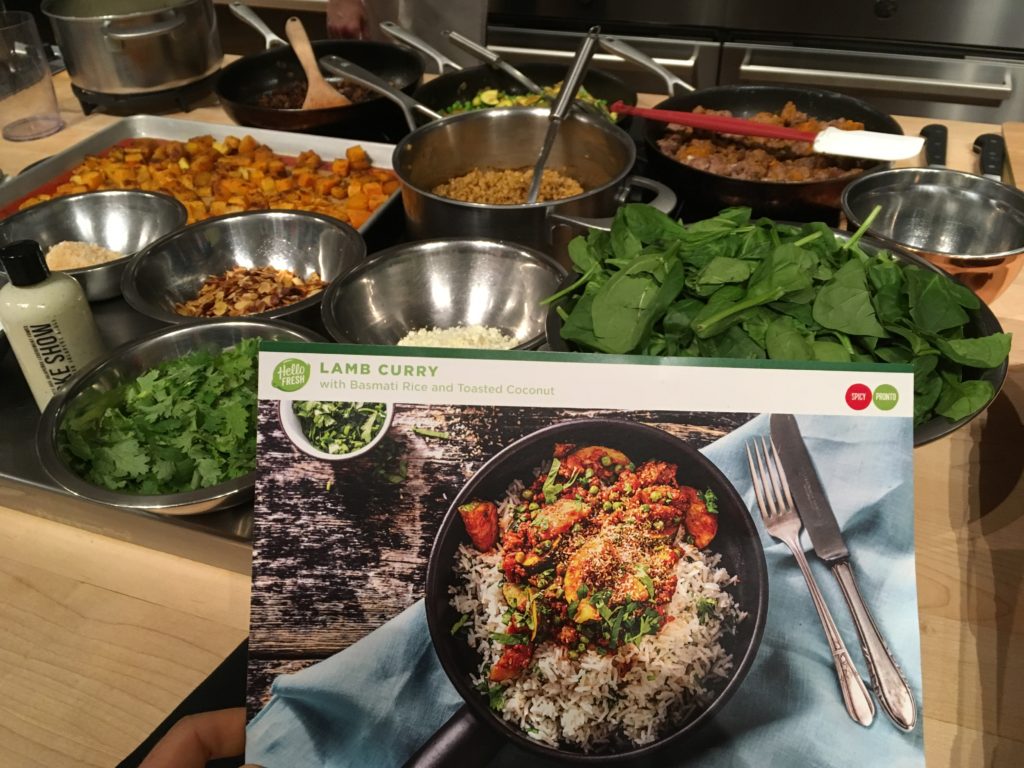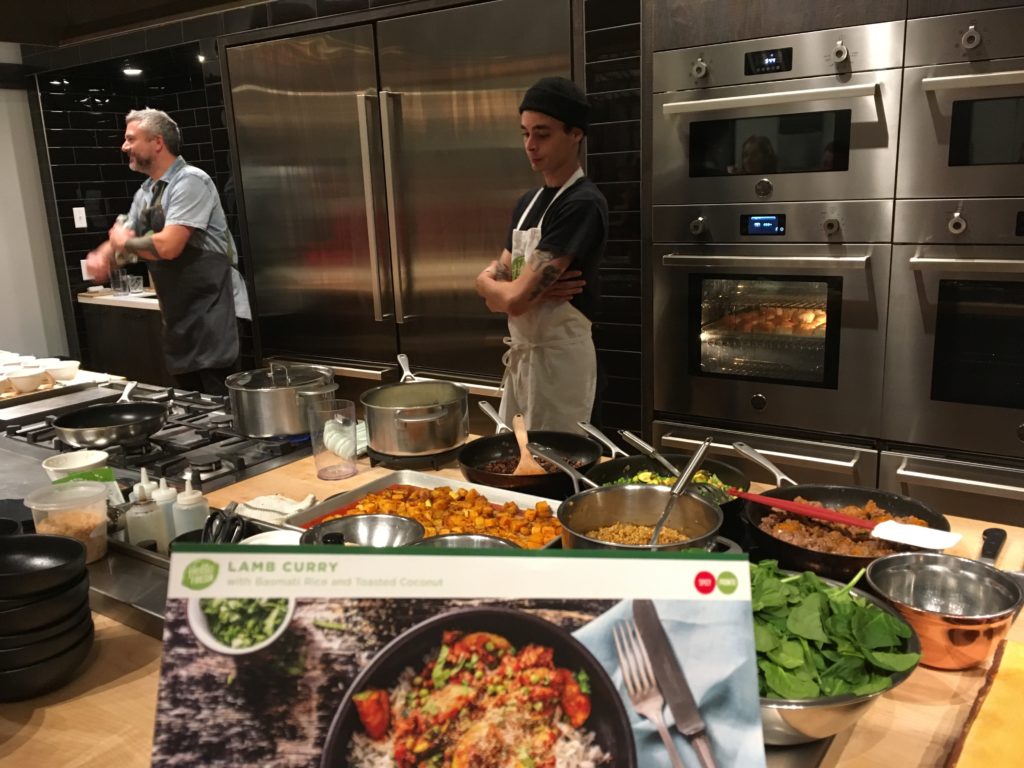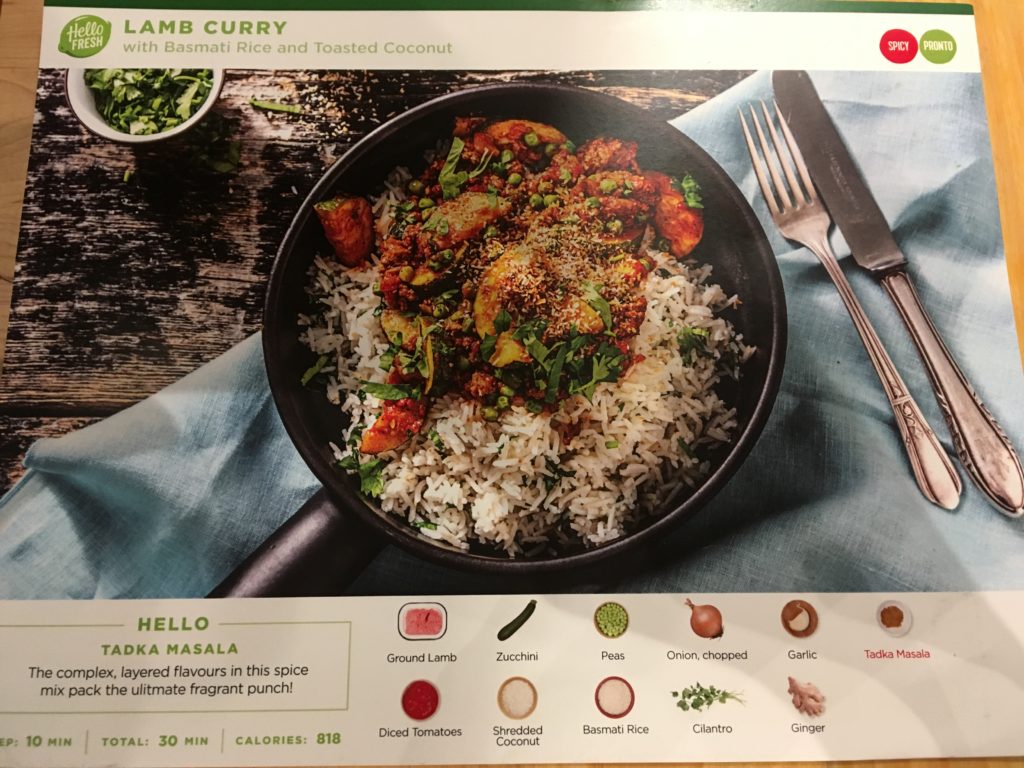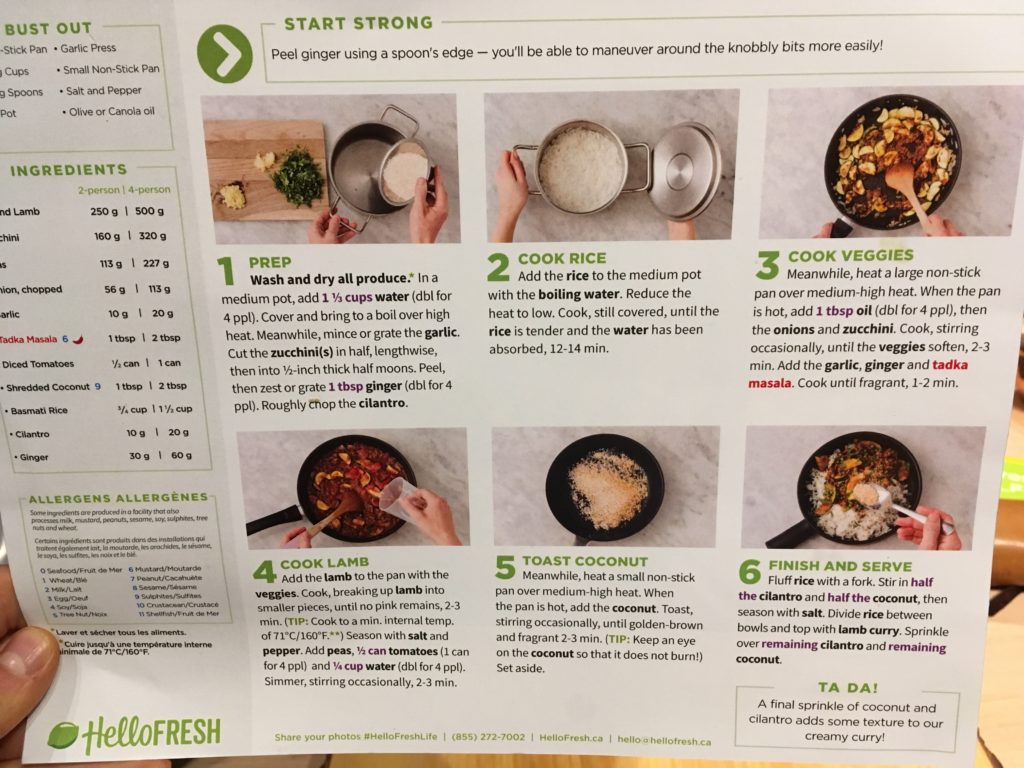
Did you know that a small team in Toronto plans all the meal kit recipes for Hello Fresh across Canada? At a recent HelloFresh event in Montreal, I met the international company’s Toronto-based Menu Planning Manager, Corby-Sue Neumann. That was more exciting to me than meeting HelloFresh’s spokesperson of the evening, Chef Martin Juneau of Pastaga. No offense to Juneau (I love Pastaga’s salmon jerky), but this lady in charge of developing, testing and scheduling the meals for every kit that goes out across Canada has one of the coolest kitchen jobs around. And she might even make it home for dinner on a regular basis, unlike most restaurant chefs.
The Secrets of Test Kitchens
I’ve been fascinated with test kitchens since I visited the Modernist Cuisine lab in Bellevue, Washington and then worked in the RICARDO office in St-Lambert, QC on the south shore for a summer. I’ve thought it would be amazing to work in a test kitchen myself, but my gluten intolerance and lactose intolerance gets in the way. (I’m waiting for that dream job testing just gluten free, dairy free recipes.) The test kitchen of celebrity chef Ricardo Larrivée is a state-of-the-art facility and is always testing new ideas for the cooking magazine. I didn’t work in the kitchen; I was on the editorial side, but I remember a week where every day brought a tweak on a cod cakes recipe from the glass-walled kitchen from Chef Étienne. One day, he came into a meeting with Ricardo and our team and set a plate of gluten free cod cakes in front of us all. I could have hugged him.
The Secrets of HelloFresh
The HelloFresh kitchen is different, I imagine, since they need to create meals that travel well and are cooked in approximately 30 minutes. But they’re similar in that they need to be simple and flavourful – RICARDO’s calling card. I love the perfection of testing a recipe for a blog or article that I’m writing, but I can’t imagine spending an entire week testing and retesting a lamb curry like Corby to decide whether it needs 56 grams or 80 grams of sliced onions, 1 tbsp or 3 tbsp of a garam masala spice blend, or 1 tbsp or 3 tbsp of shredded coconut – and then letting your suppliers know, because with HelloFresh, the suppliers do the slicing and packaging before delivering the individually packaged quantities to HelloFresh to be stuffed into that week’s bags and then shipped out across Canada. There are some regional offices, but the boxes for Montreal are packed in Toronto, I found out. So what if your eggplant supplier falls through that week or the pre-packaged bags of spice never make it to Toronto to be hand-stuffed into boxes? Do you scrap a recipe? If thousands of people have pre-ordered that recipe, can you?
That’s one thing that sets HelloFresh apart – a lot of ingredients come pre-chopped, unlike HelloFresh’s meal kit competitions (e.g. Good Food Box, MissFresh). Onions, for example. You still need to mince the garlic, but even if you have awful knife skills, the recipe will only take you an extra five or 10 minutes, usually. Corby and her team have tested it to make sure of that. Her team includes chefs, food media, home cooks and other people working in the food industry, so there’s a wide range of expertise, meaning the can better understand their customers, which include a lot of people who buy the boxes and don’t always know the difference between a paring knife and a chef’s knife.
Does Martin Juneau love meal kits?
I really wanted to time Martin Juneau of Pastaga as he made three meals for that evening’s event. I’d found that when a recipe said it would take me 30 minutes to make, it’d end up taking 35 or 40. I’m pretty efficient with my chopping, but I figured it was a difference of when I was actually started the clock – a lot of the recipes call for you to boil the rice, farro, pasta, grain, etc. at the beginning of the recipe, so if it needs to cook for 25 minutes and the recipe is only supposed to take 25 minutes, you’re going to run late because it will take you more than 0 minutes to open the package of rice, add water to a pot and bring it to a boil. But if you start the time once the rice is actually on the stove, then sure, 25 minutes is legit.

Unfortunately, Chef Juneau and Léo had prepped the three dishes in advance, so there was no ready-set-go! But Juneau didn’t complain about the time each meal had taken (of course not – compared to cooking down stock and sauces for hours, this was child’s play – cooking for dummies, though delicious cooking for dummies). Instead, he said it was interesting to have to actually follow a recipe so strictly (note: he cheated by adding lamb fat from browning the ground lamb to the cooked rice…). I can just picture him with his team at Pastaga one afternoon cooking up some test boxes for staff meal, which is what he said they did. He also said he didn’t use the kits himself (except for testing them before agreeing to cook for the event) – he does have his restaurant chef pride – but he found them convenient and tasty.
He kind of made fun of me when I asked him if he’d re-learned any new kitchen techniques in the meal kit sponsorship process. I was thinking of ones you don’t often use in a restaurant kitchen, like broiling, because why would you broil when you can use a kitchen torch or a deep-fryer à la minute? “Maybe you learned some techniques, Madame…but not us,” he said.
Well, you can shove your arrogance up your pie hole, is what I thought, but I forgave him and swallowed my pride, along with the farro-less squash and sautéd currants, onions and harissa, which he plated especially for gluten-free me. There are good reasons that I like Pastaga, and one of them is the kitchen’s ability to cater to my dietary restrictions. So if Juneau wants to be presumptuous about my culinary abilities, he can go right ahead.

What I love the most, though, is the quality of Corby and her team’s recipes (all of which are online in the HelloFresh recipe archive). I remember a Sicilian eggplant caponata recipe that surprised me with a broiling technique instead of stewing technique. I took that technique and translated it to my own recipe for Indian bharta. And the very popular turkey burrito bowl was crazy easy. You boil rice and then chop some cherry tomatoes, cilantro and avocado. Then you sauté the ground turkey with some spices. That’s it. And it’s delicious. 30 minutes. (The recipe says 25 minutes; I say 30.) I also love that there’s usually an extra element to a meal, like the lamb curry came with this zucchini and onion sauté (I believe Juneau and Léo added the peas to the sauté to keep the green things together instead of mixing the peas into the orange lamb, as per the recipe – a nice presentation idea). It was a refreshing touch on a meat-heavy meal.

And I love the tips, e.g. peel the ginger with a spoon, don’t walk away from the toasting nuts. The recipes flow well, so you’re never lost or overwhelmed. It really is an art, recipe writing. The internal temperatures, the sequence of steps, adding approximate times. A comma in the wrong place can lead to disaster:”toast, stirring occasionally” vs. “toast stirring occasionally” could result in someone either thinking they need to toast bread or that the toast stirs the dish. Yes, there are people who might be confused like that. But the most impressive part is that Corby doesn’t treat the user like an idiot. She tells you to wash and dry the vegetables at the beginning of the recipe – which is what we should all do, but often rinse them immediately before using and leave them soaking instead (at least I do), leading to soggy veg.
How do you write a recipe for a wide demographic? Young families and couples who need some kitchen training wheels or some time-saving, lawyers and doctors and engineers and accountants and graphic designers and editors – anyone with enough money and not enough time. Because it’s not cheap. You can save a lot of money if you buy all the ingredients on your own. But I keep coming back to the idea of training wheels. You can learn the recipe, the technique, the flavour combo, then take off the training wheels and repeat the recipe on your own another time. Or vary it – maybe you have parsnips in your fridge, not carrots, or green pepper, not red.
I also had an interesting conversation about packaging waste with the Canadian manager of HelloFresh. It’s a question of food waste versus packaging. The statistics on how much food people generally waste at home is shocking. You’d think restaurants would be worse, but they’re not. So with pre-packaged meal kits like HelloFresh, theoretically there’s less food being wasted. But I hate those little sealed plastic bags of Dijon mustard and plastic containers for the 2 sprigs of cilantro. All the materials are also recyclable (depending on where you live, because some of the plastics aren’t recyclable in Montreal). But there’s a lot of it.
But is it worse than the grocery store, where there’s also tons of waste but you just don’t see it? How do we think vegetables arrive at the store? In a large bin that goes directly back to the supplier? Doubtful. Out of sight, out of mind. So it’s easy to be holier than though when your recycling bin is overflowing thanks to insulated HelloFresh boxes and plastic containers each week.
But the next question is are those plastics even worth recycling? As in does the energy required and carbon dioxide produced to recycle them actually make up for the energy and carbon dioxide saved by not throwing them out? There’s no meal kit study on that. But I’d love to break down a full week of HelloFresh dinners versus making the same dishes with ingredients from your neighbourhood grocery store. So much would depend on whether you drive, how far the ingredients came from, if they arrived in plastic or had to be repackaged at the store (chicken, fish, meat, vegetables) and so many other variables.
As I told Corby, these boxes aren’t for me, but they’re not aimed at me. I like varying a recipe according to what’s in my fridge. I rarely throw out leftover food or waste uncooked food (my freezer is packed). I don’t forget about opened containers of almond milk or yogurt or kale. I feel too bad. But most people do throw them out eventually. I have a slew of recipe books and I actually use them. Most people don’t. I’m not perfect, but it’s this sense of guilt that keeps me from wasting.
And I’m cheap. I can make most of the meals for half the price (or less), though it does mean taking the time to buy everything and ending up with a little more sweet potato or crushed tomatoes than needed. But HelloFresh users pay for convenience.
Am I HelloFresh convert? Pretty much. It’s a lot more impressive than I thought, which has a lot to do with the quality of the recipes. Would I cook more of their dishes? Definitely. They’re fast, easy and delicious. The ingredient sourcing is good (local when possible, less storage time and fewer middlemen than a supermarket). The waste is debatable. I do hate throwing out those individual little packages of Dijon mustard and spice blends.
Juneau won’t be converting anytime soon, either. Like me, he likes adapting a recipe. But I admit, when I stick to Corby and her team’s instructions, everything works. And that’s something to respect, from one cook to another.
Leave a Reply